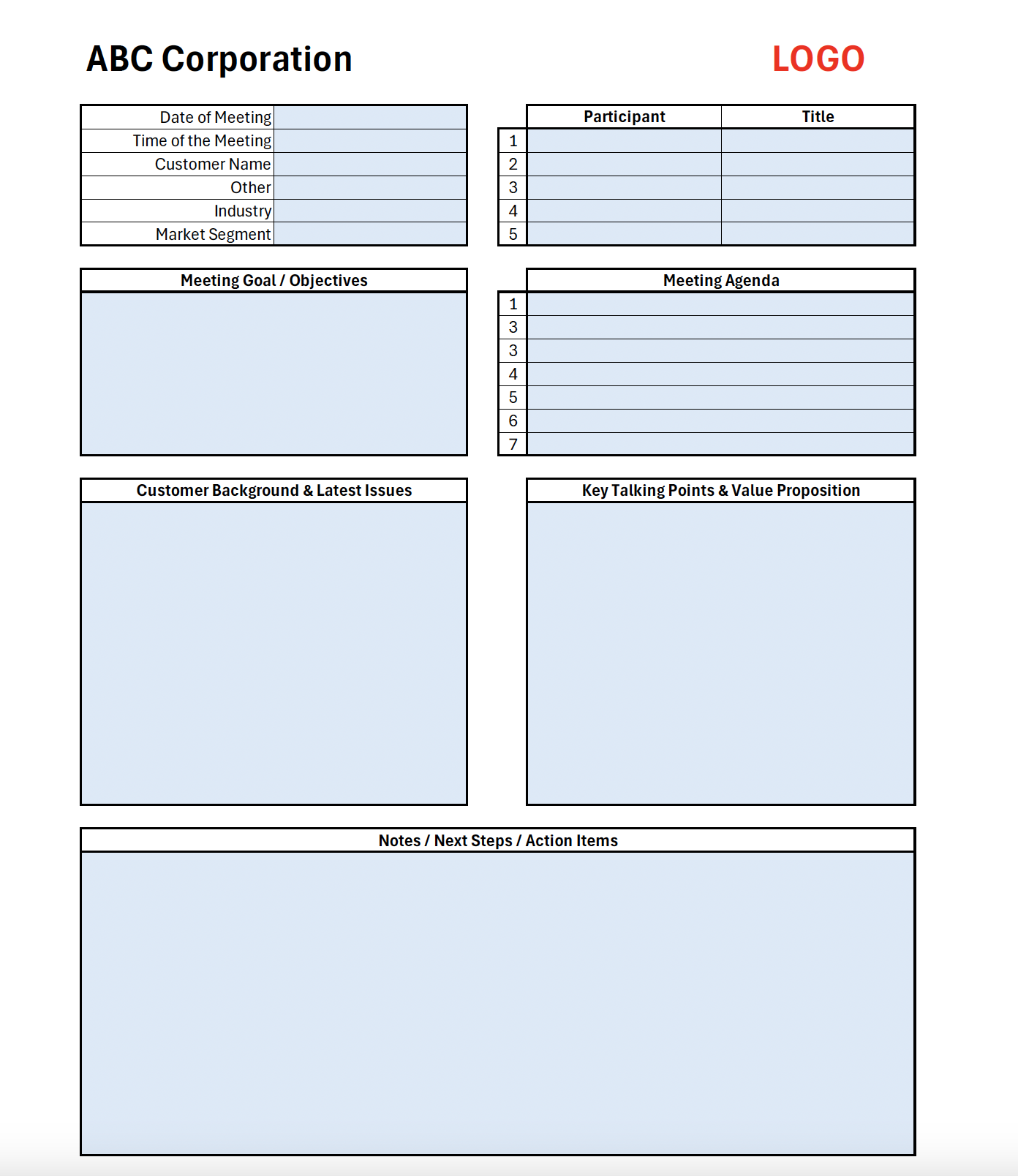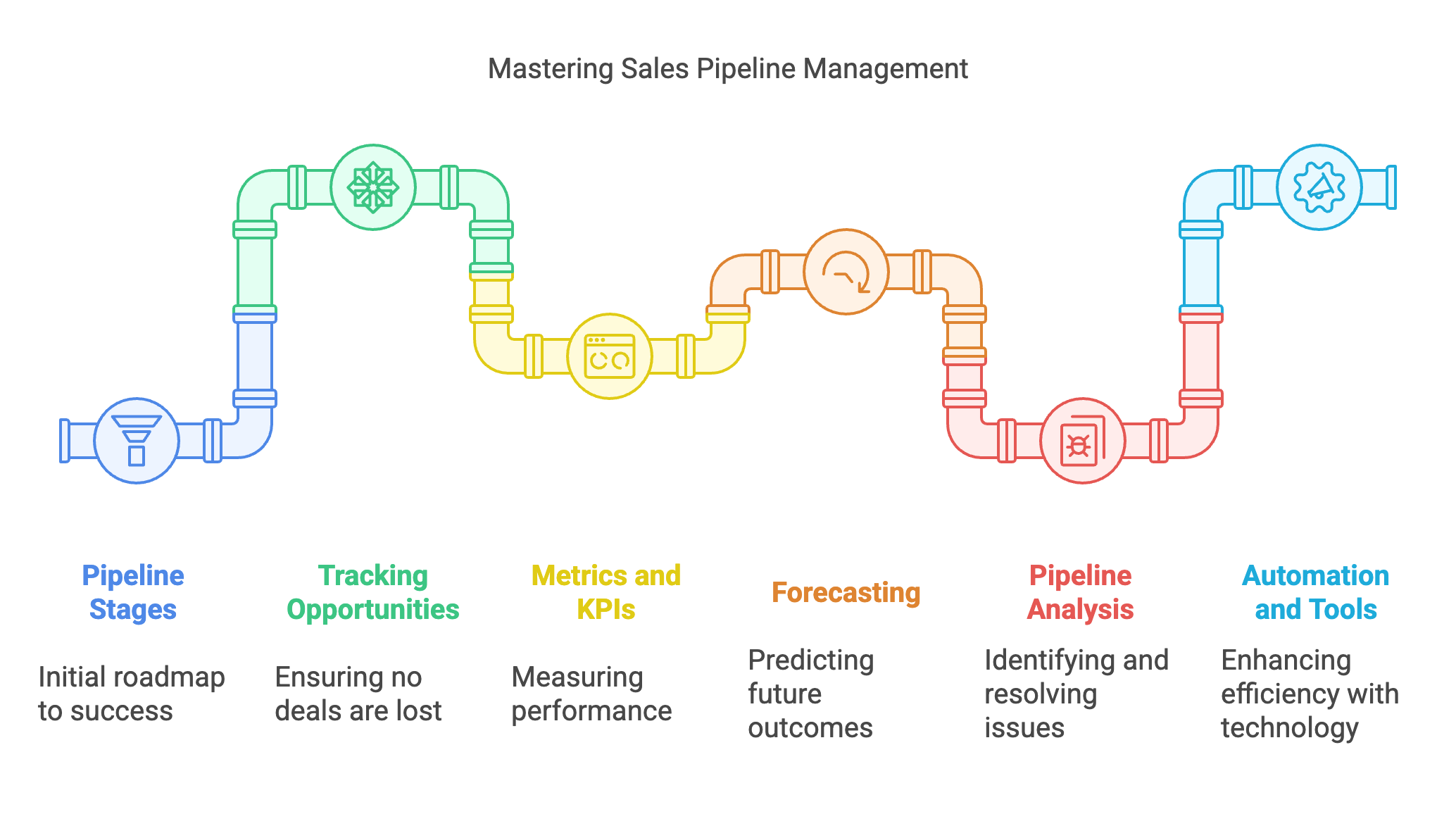- Home
- Sales Skills
- Sales Call
- Sales Pre Call Template
Sales Pre Call Planning Template
A Sales Pre Call Planning Template is your go-to guide for preparing before meeting with a prospect or customer.
It helps you understand your goals, the customer’s needs, and the key points you want to cover.
Think of it as your secret weapon for having more productive, meaningful conversations that build trust and close deals faster.
Whether you're a seasoned pro or just starting out, this simple template makes preparing for sales calls easy and effective!
Go directly to the sales pre call planning template!
When to Use a Sales Pre-Call Planning Template?
Whether you're meeting with a current client to review progress or introducing your solutions to a new prospect, having a solid plan ensures that each interaction is purposeful and productive.
While this template provides a comprehensive framework, it’s important to remember that sales teams often need a quick, user-friendly solution during their busy workdays—this is where a Customer Relationship Management (CRM) system can shine.
Of course, you can add or customize any fields to match your business needs.
Sales Pre-Call Planning Template Sections

Meeting Objectives
What to Include
- Primary Objective: Define the single most important outcome you want from the meeting (e.g., scheduling a demo, securing a follow-up meeting, or closing a sale).
- Secondary Goals: List any additional outcomes (e.g., gather feedback, uncover additional needs).
Why It Matters
- Clear objectives ensure that every interaction is purposeful and measurable. They provide a roadmap for the call and allow you to assess success afterward.
Example
- Primary Objective: Secure commitment for a product demonstration next week.
- Secondary Goals: Understand the prospect’s current challenges with their existing system and identify key decision-makers.
Detailed Agenda & Timeline
What to Include
- Introduction: Warm welcome, brief introductions, and setting the tone.
- Main Discussion Points: Outline key topics, questions, and demos to cover.
- Time Allocation: Estimate how long each section will take.
- Closing: Recap, next steps, and scheduling follow-up actions.
Why It Matters
A structured agenda respects everyone’s time, keeps the conversation focused, and ensures that critical topics are not overlooked.
Example
- Introduction (5 minutes): Greet attendees, state the meeting’s purpose, and share the agenda.
- Main Discussion (30 minutes): Customer Background Review (10 minutes): Discuss recent challenges and successes.Product Overview & Demo (15 minutes): Present key features and how they address the customer’s pain points.Q&A (5 minutes): Address questions and clarify doubts.
- Closing (5 minutes): Summarize the conversation, confirm next steps, and schedule a follow-up call.
Stakeholder & Participant Overview
What to Include
- Attendee List: Names, roles, and responsibilities (from both your team and the customer’s side).
Why It Matters
Knowing who is involved enables you to tailor your message and address the needs and concerns of each key player.
Example
- Your Team: John Doe, Account Manager, leads the meeting and presents the product demo.Jane Smith, Technical Specialist, answers technical questions.
- Customer Team: Alex Johnson – IT Director (Decision-Maker): Evaluates technical feasibility and ROI.Maria Lopez – Operations Manager (Influencer): Interested in process improvements and cost-saving opportunities.
Customer Background & Latest Issues
What to Include
- Company Overview: Brief history, industry, and size.
- Recent Developments: Any recent news, product launches, or challenges.
- Pain Points: Document the customer’s main issues, needs, and any previous frustrations with existing solutions.
- Opportunities: Highlight areas where your product/service can offer tangible benefits.
Why It Matters
Understanding the customer’s context builds credibility and trust, enabling you to present tailored solutions.
Example
- Company Overview: A mid-sized retail company recently transitioning to e-commerce.
- Recent Developments: Expanded product lines, experiencing supply chain challenges.
- Pain Points: Inefficient order processing system causing delays.Difficulty tracking inventory in real-time.
- Opportunities: Our integrated software can streamline order processing and update real-time inventory.
Key Talking Points & Value Proposition
What to Include
- Core Message: The primary value or benefit you are offering.
- Supporting Points: Bullet points that expand on how your solution addresses the customer’s specific pain points.
- Differentiators: What makes your solution unique compared to competitors?
- Summary of Past Discussions: Brief recaps of key points from earlier meetings.
- Progress Updates: Any improvements, milestones achieved, or feedback received since your last interaction.
- Probing Questions: Inquiries designed to reveal underlying pain points and further clarify the customer’s situation.
- Potential Objections: List common concerns along with ready responses to mitigate them.
Why It Matters
- Focusing on key points ensures you deliver a compelling message that aligns with the customer’s needs, making it easier to move toward a sale.
Example
- Core Message: “Our solution drastically reduces order processing time and increases inventory accuracy.”
- Supporting Points: Automation features reduce manual errors. Real-time data insights help in making faster business decisions.
- Differentiators: Easy integration with existing systems.Superior customer support and training resources.
- Previous Meeting Recap: “In our last conversation, we discussed the bottlenecks in your order processing system, particularly during peak periods.”
- Progress Updates: “Following our recommendations, your team has seen a 15% improvement in processing times, indicating a positive trend.”
- Probing Questions: “Can you walk me through how your current system manages order processing and inventory tracking?”. “What are the main challenges you face with your existing solution?”
- Potential Objections & Responses:Objection: “We’re satisfied with our current process.” Response: “That’s great to hear! Could you share which aspects work well and if any areas might benefit from even greater efficiency?” Objection: “The initial cost seems high.” Response: “Many clients had similar concerns until they saw how our solution quickly reduces operational costs. Would it help to share some case studies demonstrating a rapid return on investment?”
Notes, Next Steps & Action Items
What to Include
- Meeting Recap: Brief summary of agreed points and decisions.
- Assigned Tasks: Clearly list what each party is responsible for following the meeting.
- Timeline: Set deadlines or dates for each action item.
- Next Meeting: Schedule or propose a follow-up call/meeting if necessary.
Why It Matters
- Defining clear next steps ensures accountability and keeps the sales process moving forward with clarity.
Example:
- Recap: Agreement to conduct a product demo next week.
- Assigned Tasks: Your Side: Prepare a tailored demo addressing the identified pain points.Customer Side: Gather technical questions and identify additional stakeholders for the next meeting.
- Timeline: The demo is scheduled for [Date]. A follow-up call will be set up within one week after the demo.
- Next Meeting: Tentatively scheduled for [Date] to review demo outcomes and next steps.
Why a CRM Might Be Easier?
For small teams or straightforward sales processes, an Excel-based sales pre call planning template might suffice.
However, as your team grows or your sales cycles become more complex, managing data across spreadsheets can quickly become overwhelming.
A CRM platform automates many tasks by centralizing contacts, meeting notes, and future opportunities into one cohesive system.
This minimizes manual data entry, enhances team collaboration, and provides real-time access to key performance metrics.
In short, a CRM streamlines your sales process, allowing your team to remain agile and focused in a dynamic sales environment.
Conclusion
This Sales Pre Call Planning Template offers a comprehensive framework to help you prepare for meaningful conversations with your prospects and customers—whether they’re long-time clients or brand-new leads.
You’ll walk into every meeting with clarity and confidence by making each field clear and actionable.
And if your sales process grows more complex, remember that a CRM can further streamline these steps.
Either way, customize and adapt this template to fit your organization’s needs best.


